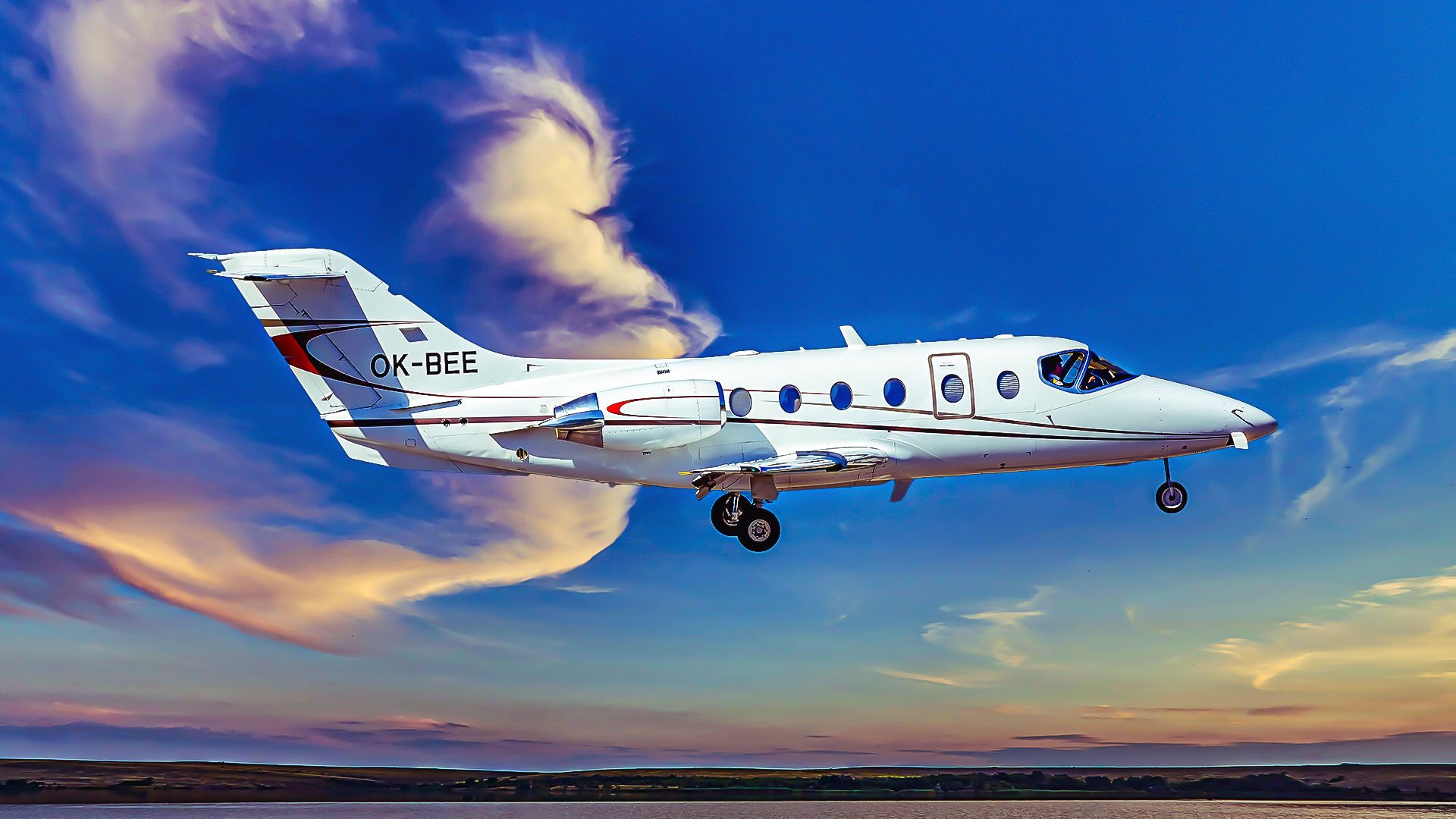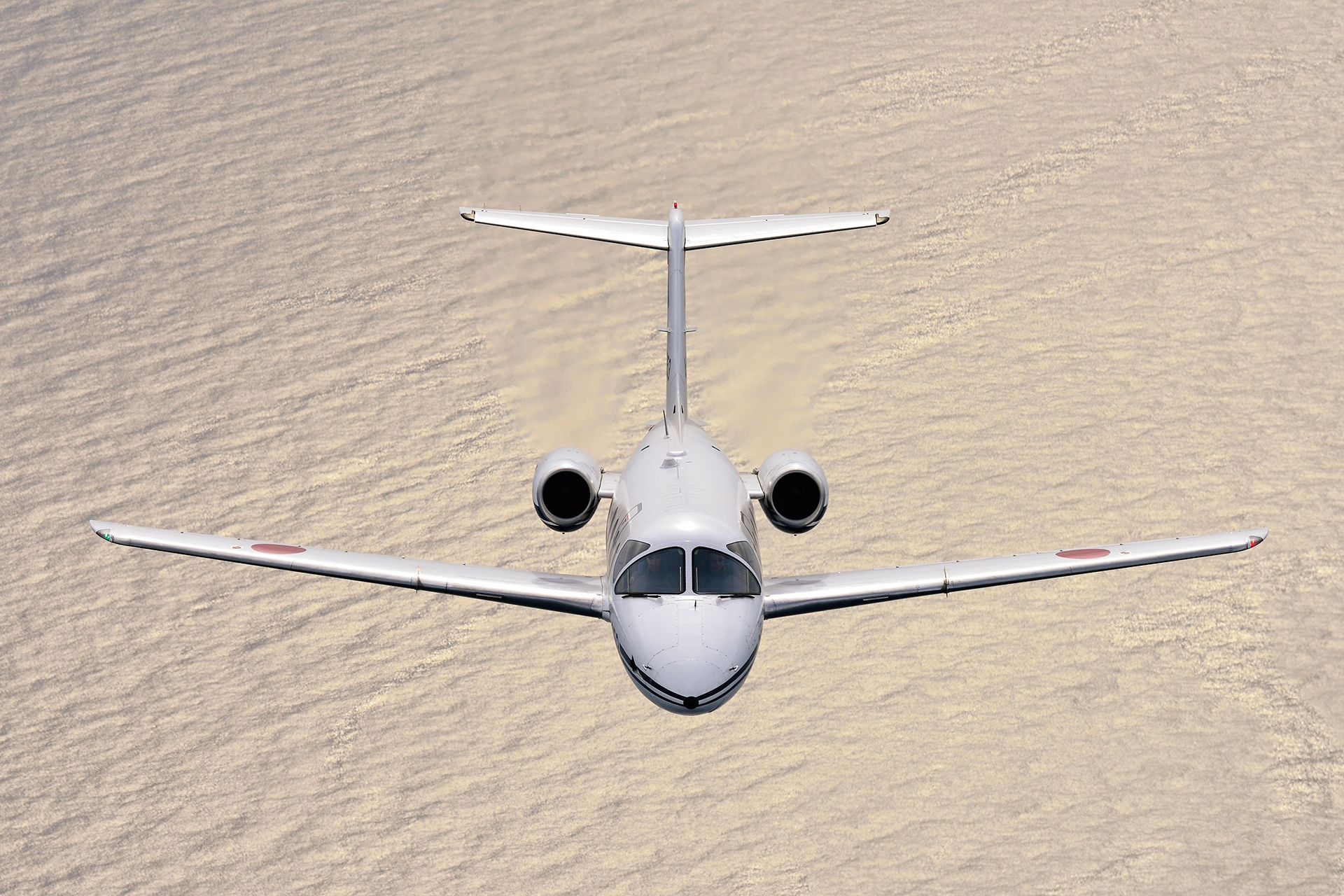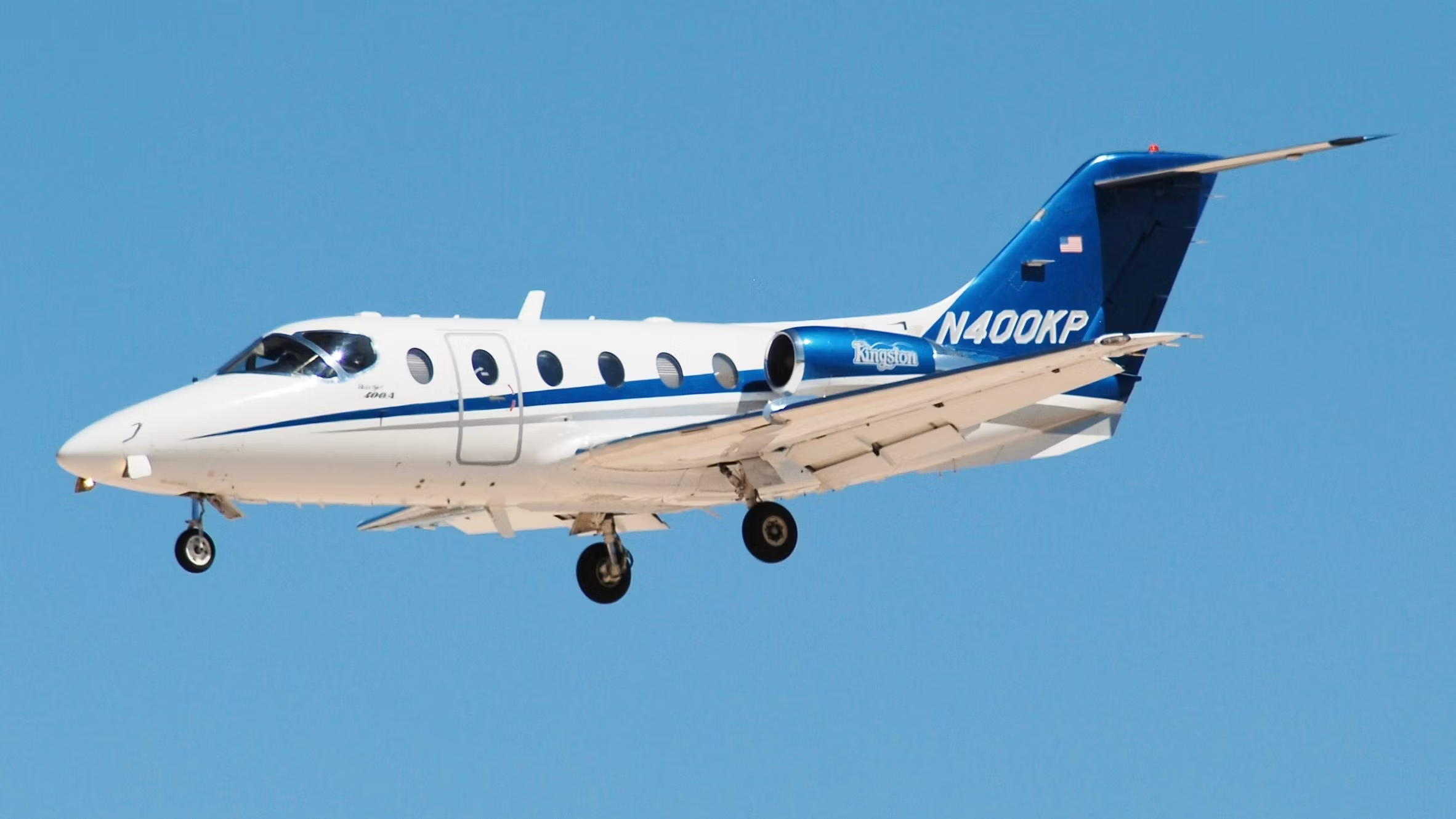Originally known as the Mitsubishi MU-300 Diamond, the Beechjet 400 is a light business jet
manufactured initially by Mitsubishi Heavy Industries and eventually by the Beech Aircraft Company (Hawker Beechcraft), an American planemaker that is now a part of defense and aerospace conglomerate Textron. In total, over 900 aircraft have been delivered to customers over the years, including variants produced by both major manufacturers.
Back in 2017, Hawker Beechcraft, which had now taken over the program, switched the name officially to the Beechjet 400 and began offering upgrade packages that could improve efficiency, performance, and range. The aircraft, which has now undergone two separate name changes (as it was later rebranded again to the Hawker 400), is a light, low-wing aircraft powered by a pair of turbofan engines that features an all-metal construction.
A capable business jet for the modern private traveler
The aircraft is flown by a crew of two and can accommodate up to eight passengers, and was designed by Mitsubishi to serve as its largest and most capable corporate aircraft, one that improved upon the size, range, and capacity of the Mitsubishi MU-2. Once manufacturing was taken over by Hawker Beechcraft, the aircraft underwent extensive modifications, and would soon complement aircraft of the Cessna Citation family in Textron Aviation’s commercial lineup.
Nonetheless, an aircraft changing its official name once (not even twice as was the case here) is a rather extraordinary feat and happens only once in a decade or so in commercial aviation. Typically, even when a merger between manufacturers takes place or when one planemaker acquires an aircraft program from another, they still do not change the aircraft’s name this drastically. Let’s take a deeper look at the story of the Beechjet 400, and what led to its multitude of name changes.
Development, origins, and entry to service
The Beechjet 400 was born in Japan, where it was originally developed by Mitsubishi Heavy Industries as the MU-300 Diamond, according to FlightGlobal. The aircraft first took to the skies in the summer of 1978, to soon meet Federal Aviation Administration (FAA) regulations for civil aircraft. A tragic American Airlines DC-10 crash outside Chicago that shortly followed the aircraft’s debut came along with extensive new safety requirements, which heavily delayed the plane’s debut.
The aircraft was certified in November 1981, and over 500 pounds of additional safety features had to be added. Mitsubishi would go on to produce nearly 100 MU-300s, all of which were assembled in the United States. By the time the 1980s came around, sales began to dwindle for this corporate aircraft, and, for manufacturer Mitsubishi, it was close to the right time for the program to be canceled.
However, American manufacturer Beechcraft saw extensive potential in the business jet and believed that it would have the capability to upgrade the aircraft and rebrand it. As a result, Beechcraft sought out the rights to the MU-300 program, rights which they acquired in 1985 after extensive negotiations.
The manufacturer quickly decided to rapidly upgrade the aircraft, introducing new luxury cabins and next-generation avionics. The aircraft was also behind the marketing and sales powerhouse that was Hawker Beechcraft. Despite these upgrades, the Hawker Beechcraft management team wanted to differentiate this new upgraded plane from its predecessor, and changing its name was a key part of this maneuver.
Photo: Japan Air Self-Defense Force
Renaming the aircraft the Beechjet 400, the manufacturer sought to leverage its name and reputation to assist in marketing the upgraded jet. The new variant was certified by the FAA in May 198, and would later be upgraded with the Beechjet 400A, a longer-range version that began appearing in the early 1990s. The company also developed a military version of the aircraft, one which entered service with the United States Air Force as a light jet trainer. Here are some specifications for the Beechjet 400:
|
Category: |
Beechjet 400 Specification: |
|---|---|
|
Maximum takeoff weight (MTOW): |
16,300 pounds |
|
Cruise speed: |
514 miles per hour |
|
Range: |
2,160 nautical miles |
A second name change was also in the works
In 1993, Raytheon Technologies, the parent company of Beechcraft at the time, acquired the Hawker business jet family from declining manufacturer British Aerospace. To align the new aircraft with the Hawker family’s naming conventions, it renamed the aircraft the Hawker 400.
The manufacturer stuck with this convention in 2003 when it introduced the Hawker 400XP, a nine-passenger variant that featured a higher takeoff weight and better avionics. The aircraft was later remanufactured by Nextant Aerospace and then Textron also launched its own variant, but none have yet to change the aircraft’s latest official name, according to Aviation Week.
Why change the plane’s name in the first place?
While we have already discussed that the aircraft’s name was first changed to include the Beechcraft name, the second name change had relatively similar motivations. The Hawker business jet line from British Aerospace had already established a reputation for quality, reliability, and performance, something that Beechcraft wanted to tap into to improve the plane’s appeal to the market.
Airliner manufacturers have historically not done the same, with planes like the McDonnell Douglas MD-11 not changing their names even when other manufacturers take over production. There was a noteworthy example of a high-profile commercial airliner name change taking place just a few years back, however.
The Bombardier CSeries program, launched on July 13th, 2008, was eventually acquired in July 2018 by manufacturing powerhouse Airbus. To better leverage Airbus’ reputation for quality, comfort, safety, and reliability, the company chose to put its name on the jet, rebranding it as the Airbus A220.



